Indigenous art is set to have a blockbuster year in the art world, with big shows at national institutions and American representation at the Venice Biennale. An intimate look inside the growing movement, from one major collector’s home in Palm Beach to one leading artist’s New Mexico studio.
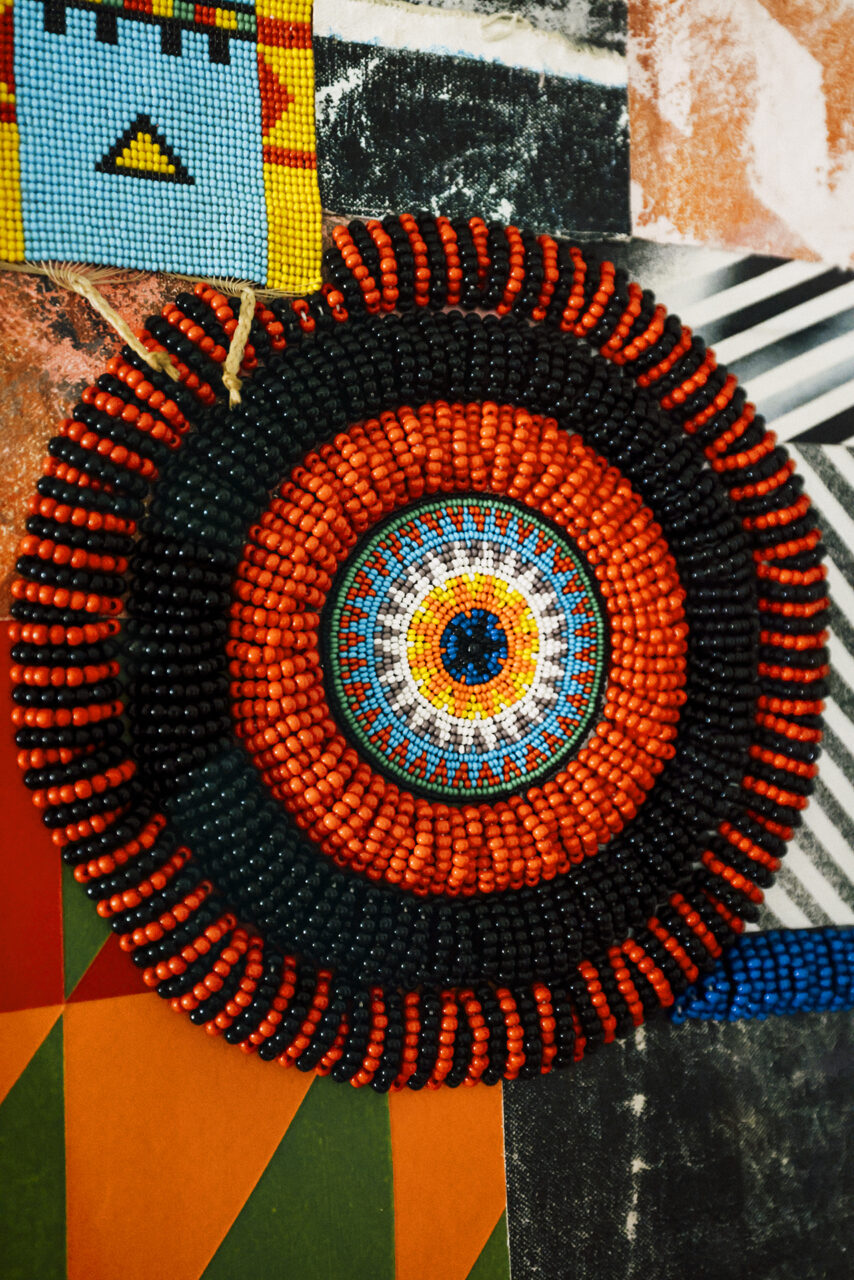
DETAIL OF “I LOVE,” 2022, BY JEFFREY GIBSON.
For Indigenous artists, 1992 looked like it might be the year for a breakthrough. Native makers had been significantly underrepresented in the biggest American museums and galleries, but the 500th anniversary of Christopher Columbus arriving in North America—an event whose meaning and legacy have been substantially re-evaluated in the years since—provided the first glimmers of hope, with institutions finally featuring work they had long ignored.
“There was this sudden interest in Native art,” says Kathleen Ash-Milby, a member of the Navajo Nation and the Curator of Native American Art at the Portland Art Museum. “All these group exhibits popped up, and some were important. But then it fell off immediately. It wasn’t really about the art, it was about the anniversary.”
But in 2024, however, “it feels different this time,” says Ash-Milby. This year looks to be a landmark one for Indigenous art that promises a staying power in the mainstream art world, something that has been quietly building over decades.
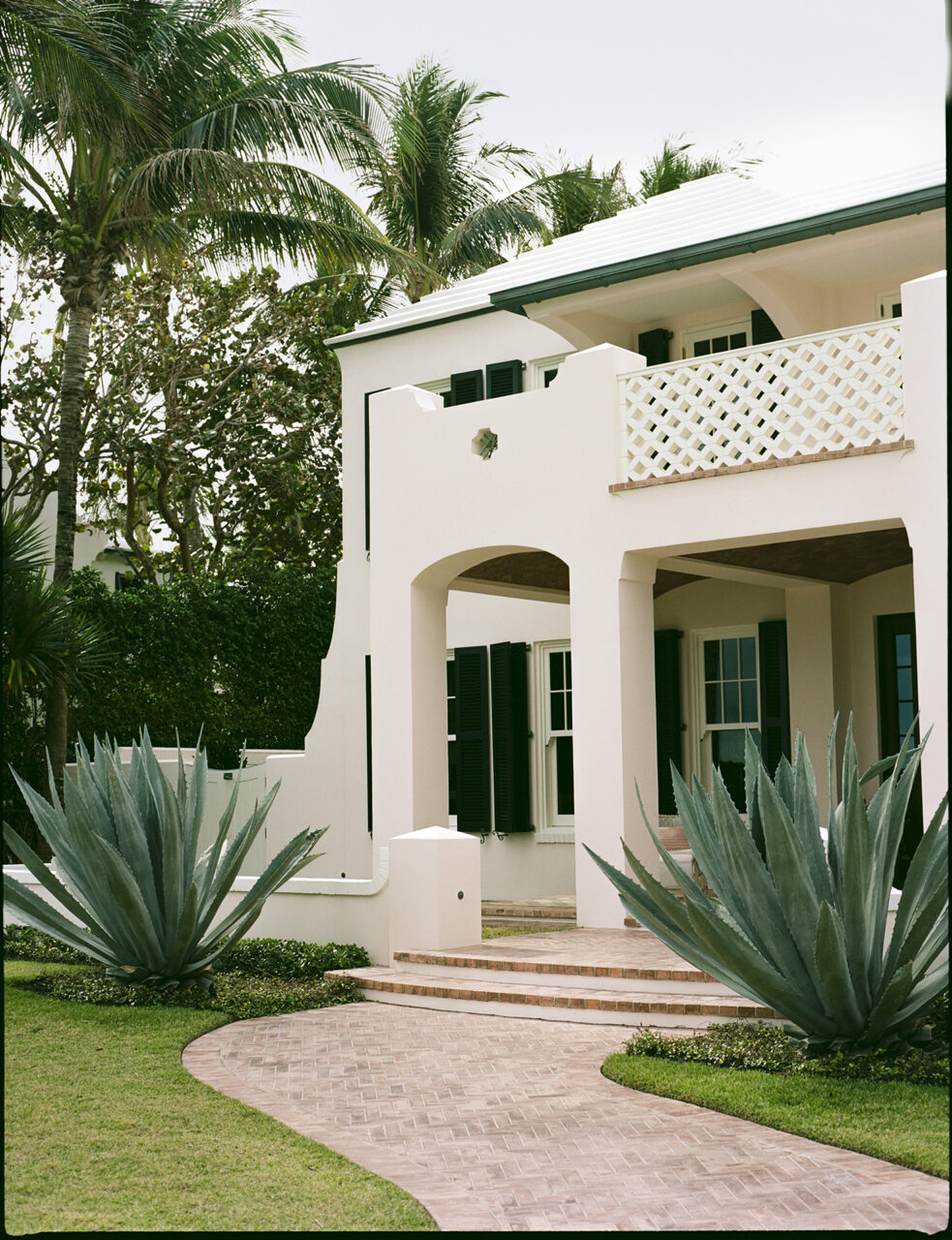
EXTERIOR OF BECKY GOCHMAN’S PALM BEACH HOME.
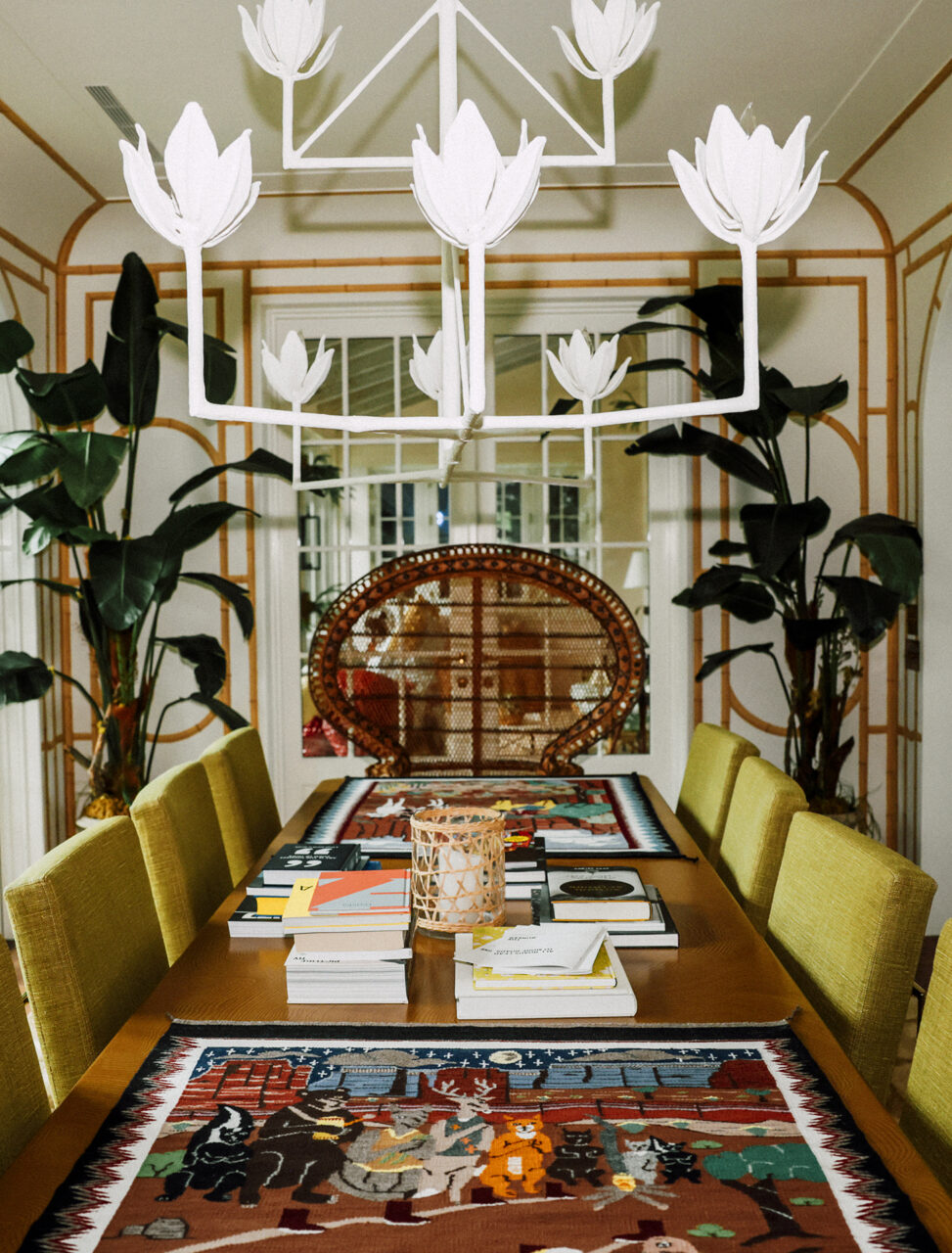
TWO WORKS BY JANE HYDEN DRAPE THE DINING TABLE. IN THE FOREGROUND, “SHOE GAME,” 2023, AND BEHIND, “JOURNEY BACK HOME ‘FROM THE LONG WALK,’” 2023.
Ash-Milby is right in the heart of the surge, as a co-commissioner (with Abigail Winograd and Louis Grachos) of the US Pavilion at the Venice Biennale, opening in April, which will feature the striking, colorful work of Jeffrey Gibson, one of the most influential contemporary artists working today and perhaps best known for his elaborately beaded objects, including punching bags.
A member of the Mississippi Band of Choctaw Indians and of Cherokee descent who is based in New York’s Hudson Valley, Gibson will be the first Native artist to represent the United States at the venerable event, which is having its 60th anniversary this year. SITE Santa Fe and the Portland Art Museum are the commissioning institutions.
“It’s so important for Native peoples that we’re going to be represented on that stage,” Ash-Milby says. “I almost can’t put it into words.”
The art world is hardly the only place where Indigenous cultures have been newly centered, with pop-culture touchstones like the award-winning Martin Scorsese movie Killers of the Flower Moon—Lily Gladstone, whose background is Blackfeet and Nez Perce, won a Golden Globe for her work in the film in January—and the acclaimed TV show Reservation Dogs.
While it’s difficult to pinpoint why this movement is on the rise, the recent increased visibility of social justice move-ments, including Black Lives Matter, has softened the ground for Indigenous creations and diverse representation to take root more firmly. “We benefit from the activism, and we benefit from the term BIPOC,” says the artist Dyani White Hawk, referring to the fact that the “I” stands for Indigenous.
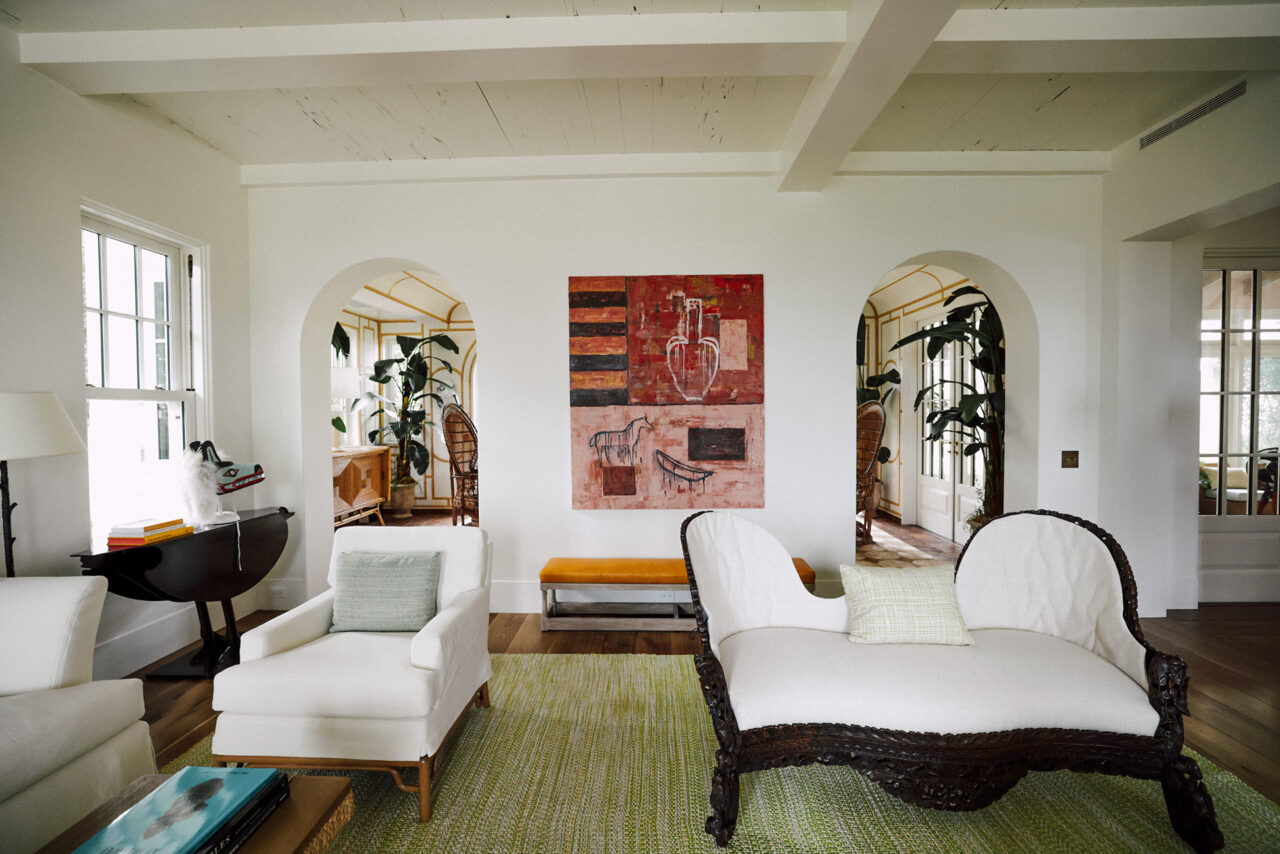
ON A CONSOLE TABLE BY THE WINDOW SITS “GOOCH S’ÁAXWU WOLF HEADDRESS,” 2023, BY JAMES P. JOHNSON, WHILE “THE SPANIARD,” 1988, BY JAUNE QUICK-TO-SEE SMITH HANGS BETWEEN TWO ARCHWAYS.
Perhaps unexpectedly, Palm Beach is a hub of this current flowering, too. The art collector and equestrian Becky Gochman, who splits her time between Palm Beach and New York City, co-founded an Indigenous-focused initiative in 2021 called the Forge Project.
Working with her co-founder, former New York City gallerist Zach Feuer, Gochman set up Forge in New York’s Hudson Valley as a lending library of sorts, buying Indigenous artworks so they can be lent and donated to institutions. But that sounds a bit passive in describing what Forge really is: “We’re working as activists for the library,” as Feuer puts it.
Gochman is a former art teacher who is married to David Gochman, whose fortune is derived from a former family business Academy Sports + Outdoors (they have been listed as America’s 109th richest family by Forbes). She also set up the Gochman Family Collection, a parallel trove of art that Feuer advises on, and she lives with dozens of those works in both Florida and New York; a significant portion of the collection is devoted to Indigenous artists.
As part of their work in this arena, the Gochmans also gave $25 million to Bard College, a gift matched by philan-thropist George Soros, to set up a Center for Indigenous Studies and fund other related activities like scholarships and faculty positions.
Gochman, a refreshingly frank presence on the art scene, acknowledges that her focus surprises some visitors to her Florida home, a Dutch colonial built in 2017 that was decorated by noted designer Tom Scheerer. Palm Beach is known for its high-end traditionalism, and her collection is anything but.
Gochman happily notes that she has wallpaper by Jeffrey Gibson in what he has called a “trickster” pattern, inspired by the playful disruptor figure featured in some Native folklore and myths. “Having this art in Palm Beach, where it’s a little bit out of place and unexpected, feels like being a bit of a trickster,” she says.
Gochman, who has been involved in Indigenous collecting and philanthropy for about four years, at first did not intend to take on such a specific mission, but as she contemplated the ways she could make a difference in the art world and consulted with Feuer, it became a natural focus. “I’m getting so much out of this,” she says, “and I want to say that to other collectors: It’s been life-changing.”
The collector notes that living with her collection has affected her deeply, and is a far cry from seeing works in a gallery or museum. “I go to sleep thinking about it, I wake up thinking about it, and I wouldn’t have it any other way,” Gochman says. In her collection are works by many wellknown Indigenous makers, like Jaune Quick-to-See Smith, Kay WalkingStick, and Kent Monkman, as well as the Santa Clara Pueblo ceramicist Rose B. Simpson.
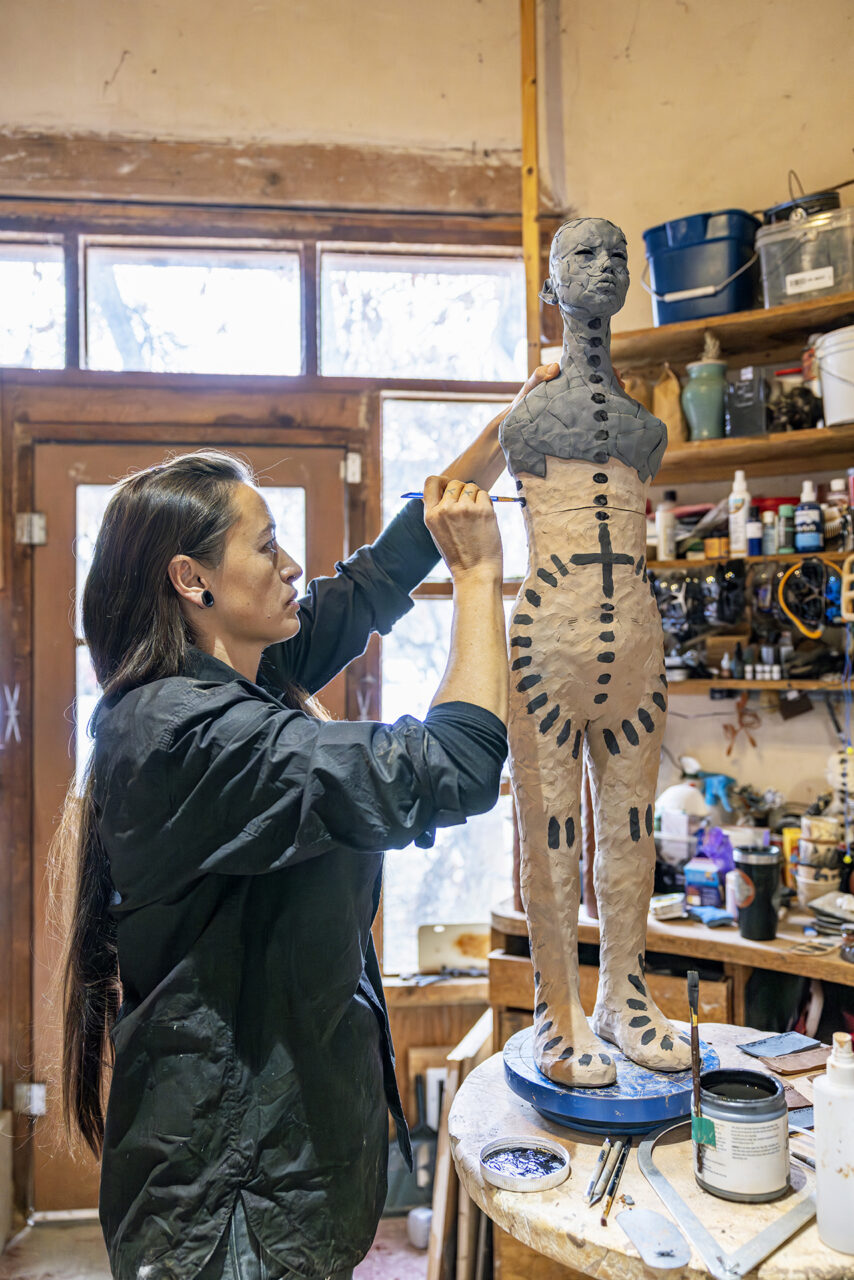
Artist Rose B. Simpson at work in her New Mexico studio.
Concurrently, a major show of Simpson’s work will debut this spring at the nearby Norton Museum of Art in West Palm Beach. Rose B. Simpson: Journeys of Clay runs at the Norton from March 23 to September 1.
Click HERE to purchase PALMER Vol 5 and read the full story.


